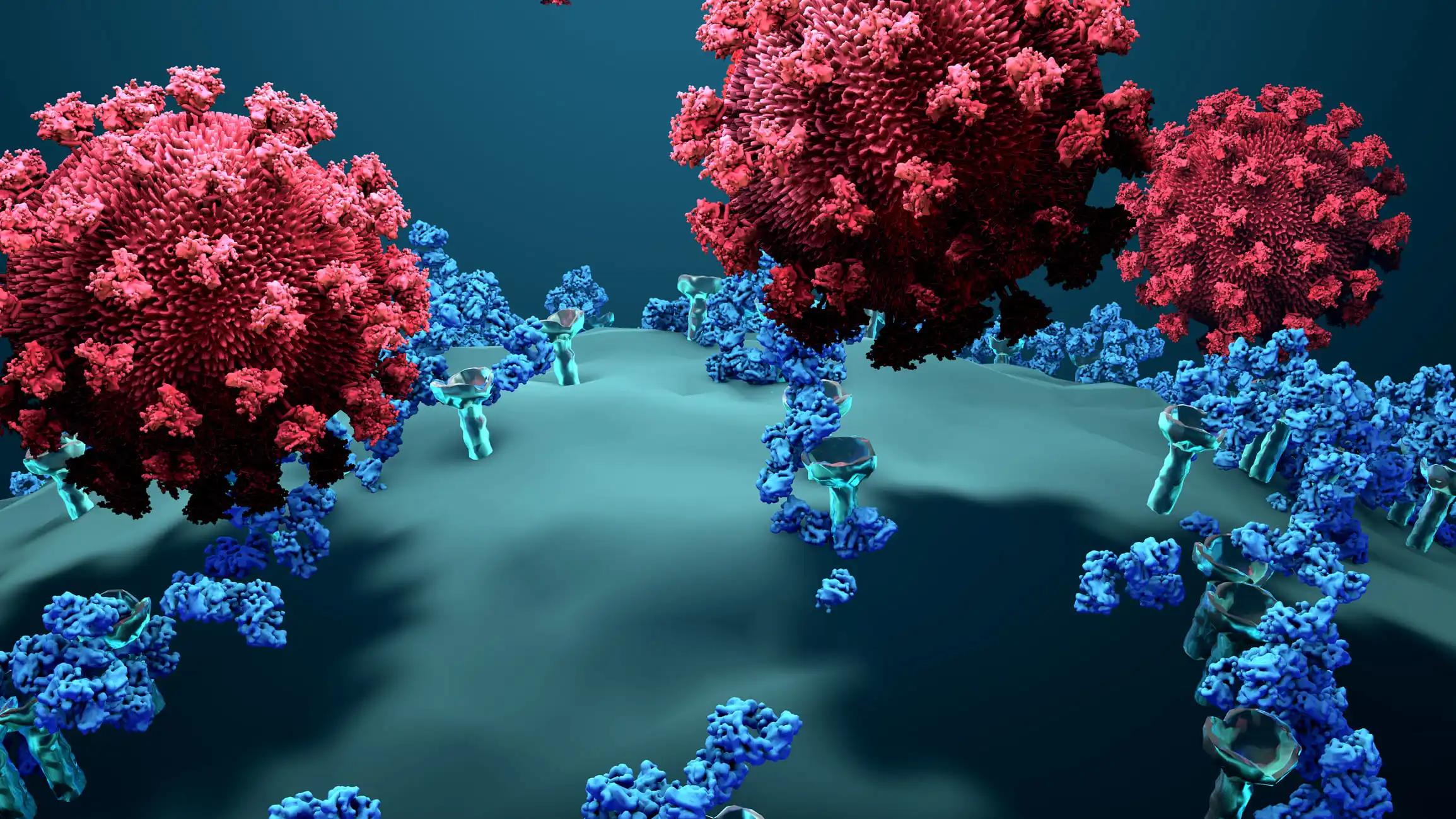KEY TAKEAWAYS
- The (NCT02950051) Phase III GAIA study is a four-arm, randomized, open-label study involving 926 participants with previously untreated Chronic Lymphocytic Leukemia (CLL)
- The study aimed to evaluate the impact of genomic abnormalities and mutation status on the efficacy of venetoclax-based time-limited therapy in patients with CLL who lack del(17p) or TP53 mutations.
- The primary outcome measures of the study were the minimal residual disease (MRD) negativity rate in peripheral blood (PB) and progression-free survival (PFS).
- The study found that GVe and GIVe were independently favorable factors in a multivariable analysis that included all clinical, laboratory, and genetic markers significantly associated with PFS.
In the Phase III GAIA study, fit, treatment-naive patients with CLL who lacked del(17p) or TP53 mutations identified by Sanger sequencing were treated with three distinct time-limited venetoclax-based combinations against CIT. Patients were randomly assigned to receive chemoimmunotherapy (CIT), Rituximab (RVe), Obinutuzumab (GVe), or Obinutuzumab and Ibrutinib (GIVe)
In 913 of 926 patients (98.6%) of the complete trial group, genomic aberrations were evaluated at enrollment by FISH, IGHV by sequencing with a threshold of 98% homology, and mutations via amplicon-based targeted NGS for TP53, NOTCH1, SF3B1, MYD88, KRAS, NRAS, BRAF, EGR2, NFKBIE, RPS15, XPO1, and BIRC3.
According to the hierarchical model, the incidences of various genomic aberrations were found to be as follows: del(11q) – 17.5%, +12 – 16.2%, mono-allelic del(13q) – 44.6%, and normal karyotype – 21.7%. In terms of IGHV mutation status, 55.9% of patients had unmutated IGHV (U-IGHV), while 41.0% had mutated IGHV (M-IGHV) (ITT). Subset#2, consisting of 50 patients equally distributed among U-IGHV and M-IGHV, showed the following incidence of gene mutations: SF3B1 – 22.6%, NOTCH1 – 20.5% (exon 34 and 3’UTR), NFKBIE – 13.6%, BIRC3 – 11.8%, BRAF/KRAS together – 9.6%, XPO1 – 7.9%, EGR2 – 5.6%, RPS15 – 5.5%, and MYD88 – 4.2%. BIRC3 and NFKBIE had frequent minor mutations with a variant allele fraction (VAF) of 1.5% to 10% (59.6% and 56.0% of all variants, respectively), while minor mutations in TP53 not previously detected by Sanger sequencing were rare (2.0%).
In the pooled analysis of GVe/RVe/GIVe, undetectable minimal residual disease (uMRD) was found to be unrelated to any genetic subgroup. However, in the single-arm analysis, it was observed that NOTCH1 mutation was linked to a lower rate of uMRD in GVe (74.4% vs 88.6%, p=0.02) and a higher uMRD rate in +12 cases with RVe (73.5% vs 52.2% in del(13q), p=0.03). The combined immuno-chemotherapy (CIT) showed a significantly lower uMRD rate in patients with unmutated immunoglobulin heavy variable chain (U-IGHV) (42.0% vs 66.3% in mutated IGHV, p<0.01) and those with deletion of 11q (39.0% vs 58.4% in del(13q), p=0.04). On the other hand, patients with mutated MYD88 showed a higher uMRD rate (92.3% vs 50.2%, p=0.02). These findings suggest that genetic subgroups have varying associations with uMRD in patients with lymphoid neoplasms.
After a median follow-up of 38.8 months, the ITT population experienced 188 PFS events. In the univariate analysis for CIT, U-IGHV (HR 4.47, p<0.01), del(11q) (HR 2.68, p<0.01), and NOTCH1 mutations with VAF>10% (HR 2.01, p=0.01) were significantly associated with shorter PFS. In the combined analysis for RVe/GVe/GIVe, U-IGHV (HR 2.29, p<0.01), NOTCH1 mutations (HR 1.76, p<0.01), and BRAF/RAS mutations (HR 2.45, p<0.01) were also associated with shorter PFS, while del(13q) (HR 0.67, p=0.03) was associated with longer PFS. In separate analyses for each venetoclax arm, mutated NOTCH1 (GVe: HR 2.2, p=0.04 and GIVe: HR 2.2, p=0.05), BIRC3 (GIVe: HR 3.6, p<0.01), BRAF/KRAS/NRAS (RVe: HR 3.6, p<0.01 and GIVe: HR 3.7, p<0.01), NFKBIE (GVe: HR 3.0, p<0.01), del(13q) (GVe: HR 0.4, p=0.01), and U-IGHV (GVe: HR 2.6, p=0.03 and GIVe: HR 2.7, p=0.03) were identified as prognostic factors for PFS. Subset 2 did not show any association with shorter PFS, including among M-IGHV patients.
After conducting a multivariable analysis, it was found that GVe and GIVe treatments were favorable factors (HR 0.42 and 0.33, respectively, both p<0.01), whereas U-IGHV (HR 2.43, p<0.01) and mutated NOTCH1 (HR 1.46, p=0.03) were independent prognostic factors. However, in a separate analysis for CIT, del(11q) (HR 1.89, p=0.03), U-IGHV (HR 3.08, p<0.01), and mutated NOTCH1 with a VAF >10% (HR 2.12, p=0.01) were identified as independent adverse genetic risk factors. In the combined analysis of RVe/GVe/GIVe, mutated BRAF/RAS (HR 1.87, p=0.01), U-IGHV (HR 1.85, p<0.01), and mutated NOTCH1 (HR 1.54, p=0.04) were also confirmed as independent adverse prognostic factors.
Preliminary findings from CLL13/GAIA indicate that gene mutations are linked to reduced uMRD rates and decreased PFS following CIT or venetoclax-based treatment. IGHV and NOTCH1 mutations remain prognostic indicators for both treatment modalities. The presence of RAF/RAS pathway mutations (9.6% overall) is associated with a shorter PFS when treated with venetoclax-based therapy. However, no apparent effect on outcome has been observed with CIT at this time.
Source: https://ash.confex.com/ash/2022/webprogram/Paper163775.html
Clinical Trial:https://clinicaltrials.gov/ct2/show/NCT02950051
Tausch, E., Schneider, C., Furstenau, M., Robrecht, S., Yosifov, D.Y., Mertens, D., Gregor, M., Thornton, P., Staber, P.B., Tadmor, T., Levin, M.D., da Cunha-Bang, C., Poulsen, C.B., Illmer, T., Schöttker, B., Janssens, A., Christiansen, I., Noesslinger, T., Baumann, M., Wendtner, C.M., Eldering, E., Kreuzer, K.A., Ritgen, M., Fink, A.M., Fischer, K., Kater, A.P., Niemann, C.U., Hallek, M., Eichhorst, B., & Stilgenbauer, S. (2022). 345 Genetic Markers and Front Line FCR/BR Vs. Rve, Gve and Give Treatment – Outcome Results from the CLL13/GAIA Trial. 64TH ASH Annual Meeting and Exposition. https://ash.confex.com/ash/2022/webprogram/Paper163775.html



